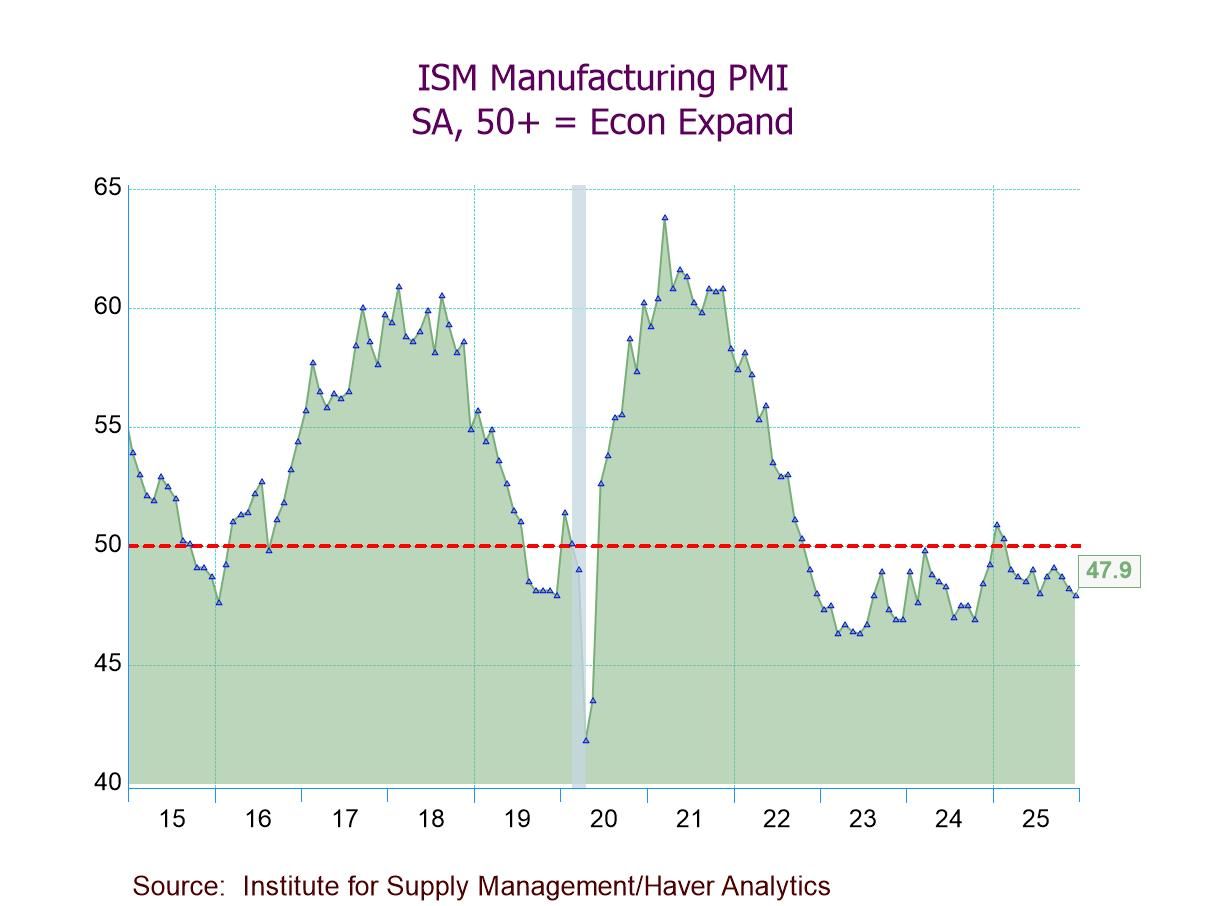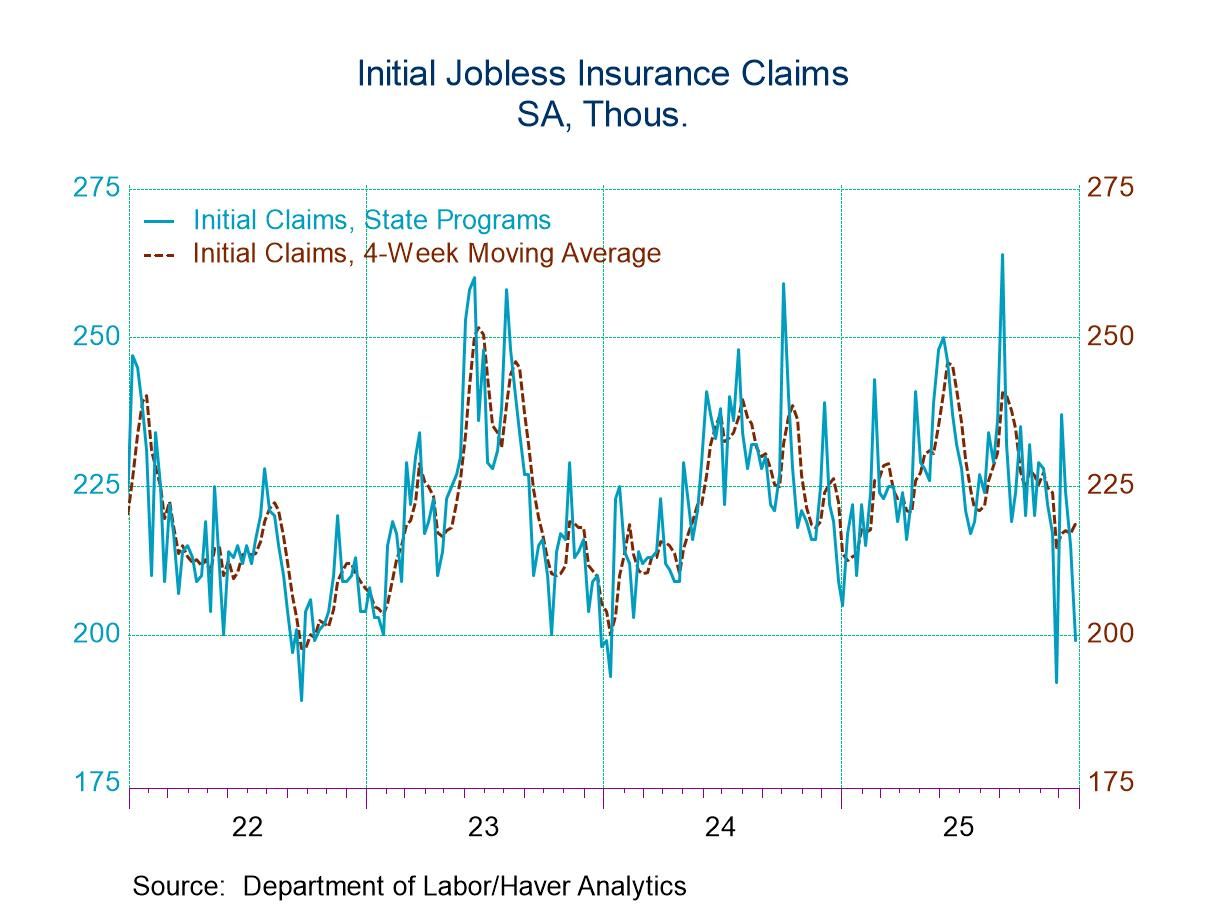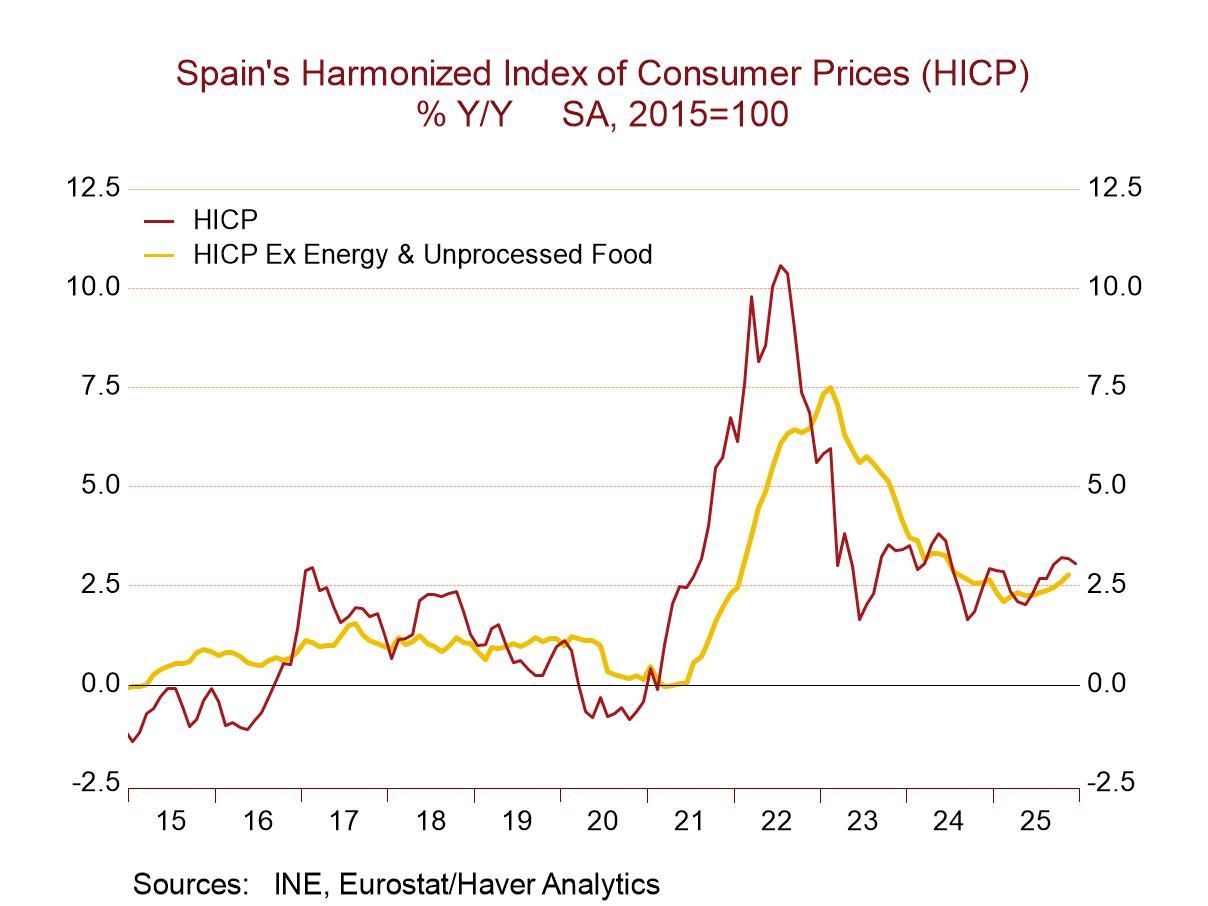EU Commission Index Shows Little Change in EMU in February

In February, the EU index for overall activity in the European Monetary Union ticked slightly lower to 99.7 from 99.8 in January. While there is little-change month-to-month, it shows that the improvement is holding up since December had a value of 97.1 and November, a value of 95.1. EMU economic assessments are moving higher, but in January and February gains are consolidating.
Sector stories The industrial confidence measure registered plus-one in both February and January, compared to readings of minus-one in both December and November. Consumer confidence improved in February moving to -19 from -20.7 in January, reflecting improvements from both December and November levels. The retailing assessment at zero in February, improves from -1 in January, -3 in December, and -6 in November - a clear ongoing trend of improvement for retailing. The construction sector is more waffling. Its February reading of +2 is above the January reading of +1, but that's below the readings for both December and November. Construction has remained relatively stronger than the other sectors; however, it is not advancing now. The services sector at +10 in February is at the same level as it was in January, but it's up from an assessment of +8 in December and of +4 in November.
Sector summary On balance, the sector readings in the European Monetary Union are stable or higher; construction is a minor exception. However, these are not high readings. The overall European Monetary Union index has a standing in its 47.9 percentile (below 50 and therefore) below its historic median level. Consumer confidence sits at an extremely weak 9.1 percentile reading, in the lower 10 percentile of its historic queue of values. The industrial sector has a 73-percentile standing; it's in the top 30% of historic readings; services have a 62-percentile reading, just inside the top 40% of readings but the sector is above its median and that's still a positive situation. Retailing and construction have the two strongest readings: retailing has a reading in its 82.9 percentile with construction in its 87.7 percentile; both are quite strong readings in historic comparison.
Since COVID... If we look at changes since the Covid situation developed, the overall index is lower by five points compared to January 2020 and all the sectors are lower compared to January 2020 except the industrial sector which is higher by six points. On balance, there has been little growth and for the most part weaker conditions over the last three years since COVID came to town.
Country-level conditions There are 18 early reporting European Monetary Union members reporting and among these 18 members all but 7 showed month-to-month improvement in February; all but two had shown improvement in January. These metrics of breadth reinforce the notion that conditions in the monetary union have been improving even if they're not strongly reflected in the aggregate data. Clearly, conditions are better in January and February, taken together, than they were in November and December, although there's scant improvement in February compared to January. That finding is echoed across the various industries as well as across countries. Country level data are, for the most part, still very weak among these 18 reporting countries. Only four have percentile standings above their medians - above a level of 50%. Among the big-four economies Germany has a rank standing as 37th percentile, France is at its 40th percentile, Spain is at its 41.6 percentile; only Italy, in its 62nd percentile, has a reading above its historic median. Among the weakest standings are Estonia at a 5.7 percentile standing, Slovakia at an 8.2 percentile standing, Belgium at a 14.9 percentile standing, and Finland at a 15.6 percentile standing.

Summing up On balance, the indexes from the European Union show a great deal of variation across the union; not surprisingly the strongest standings are generally among the smallest countries and the weakest readings are also among the smallest countries. That’s where the volatility lies. The large economies except for Italy have standings below their historic medians underscoring the performance is still not up to par in the Monetary Union. However, momentum has improved, and over the last two months, it has stabilized. Those are the main takeaways from the February report.
Robert Brusca
AuthorMore in Author Profile »Robert A. Brusca is Chief Economist of Fact and Opinion Economics, a consulting firm he founded in Manhattan. He has been an economist on Wall Street for over 25 years. He has visited central banking and large institutional clients in over 30 countries in his career as an economist. Mr. Brusca was a Divisional Research Chief at the Federal Reserve Bank of NY (Chief of the International Financial markets Division), a Fed Watcher at Irving Trust and Chief Economist at Nikko Securities International. He is widely quoted and appears in various media. Mr. Brusca holds an MA and Ph.D. in economics from Michigan State University and a BA in Economics from the University of Michigan. His research pursues his strong interests in non aligned policy economics as well as international economics. FAO Economics’ research targets investors to assist them in making better investment decisions in stocks, bonds and in a variety of international assets. The company does not manage money and has no conflicts in giving economic advice.






